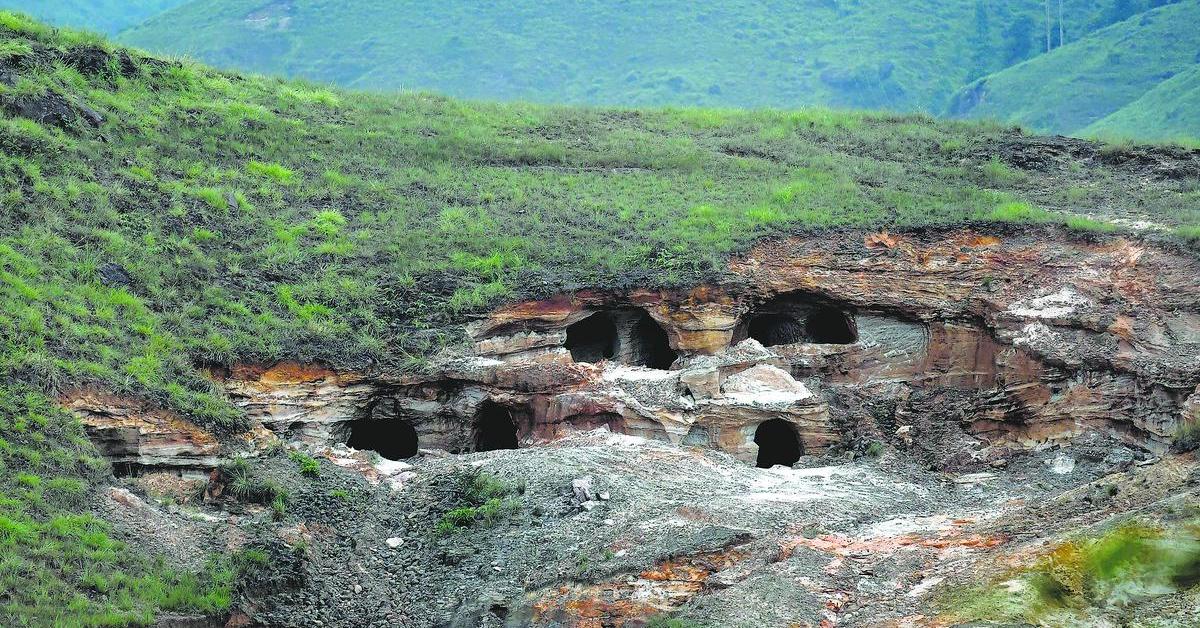Are you curious to know what is rat hole mining? You have come to the right place as I am going to tell you everything about rat hole mining in a very simple explanation. Without further discussion let’s begin to know what is rat hole mining?
Mining is an essential industry that fuels economic growth and provides valuable resources. However, certain methods of mining can have detrimental effects on the environment, ecosystem, and human lives. Rat Hole Mining is one such method that has gained notoriety for its hazardous and unsustainable practices. In this blog, we will explore the concept of Rat Hole Mining, its impact, and the need for responsible mining practices.
What Is Rat Hole Mining?
Rat Hole Mining is a method of mining coal deposits, primarily practiced in the northeastern states of India, particularly in the state of Meghalaya. It involves digging vertical pits, known as rat holes, into the ground to access coal seams. These rat holes are often narrow and small, requiring miners to crawl through them to extract coal manually.
Hazardous Practices And Environmental Impact
- Unsafe Working Conditions: Rat Hole Mining is characterized by extremely hazardous working conditions. Miners operate in cramped spaces with poor ventilation, risking their lives every day. The lack of proper safety measures and inadequate protective equipment further exacerbate the dangers faced by the miners.
- Environmental Degradation: Rat Hole Mining has severe environmental consequences. The excavation of rat holes leads to the destabilization of the surrounding soil, increasing the risk of landslides. The indiscriminate dumping of coal waste and debris pollutes water bodies, contaminating local water sources and affecting aquatic life.
- Deforestation and Biodiversity Loss: Rat Hole Mining often involves clearing vast stretches of forests to access coal deposits. This results in the destruction of natural habitats, leading to the loss of biodiversity and disruption of ecosystems. The long-term ecological impact is significant and takes years to recover, if at all.
- Water Scarcity and Pollution: Rat Hole Mining contributes to water scarcity and pollution in the surrounding areas. The unregulated disposal of coal waste contaminates water sources, making them unfit for consumption. Additionally, the excessive extraction of groundwater for mining activities further exacerbates water scarcity issues.
- Health Hazards: The miners engaged in Rat Hole Mining are exposed to numerous health hazards, including respiratory diseases, injuries, and the risk of mine collapses. The lack of proper safety measures and the absence of adequate healthcare facilities exacerbate the health risks faced by these workers.
The Need For Responsible Mining Practices
- Safety and Worker Welfare: Responsible mining practices prioritize the safety and well-being of miners. Implementing proper safety regulations, providing protective gear, and offering healthcare facilities are essential aspects of responsible mining.
- Environmental Protection: Responsible mining practices focus on minimizing environmental impact. This includes proper waste management, reclamation of mined areas, and adherence to environmental regulations. Implementing sustainable mining techniques can help mitigate the environmental degradation caused by mining activities.
- Community Engagement: Responsible mining involves engaging with local communities, understanding their concerns, and incorporating their perspectives. This ensures that mining activities are conducted in a manner that respects the rights and livelihoods of the affected communities.
- Transparency and Accountability: Responsible mining practices prioritize transparency in operations and adhere to ethical business practices. This includes disclosing environmental impact assessments, providing information on the extraction process, and being accountable for the social and environmental consequences of mining activities.
Conclusion
Rat Hole Mining represents a dangerous and unsustainable method of extracting coal. Its hazardous practices, environmental degradation, and adverse social impact highlight the urgent need for responsible mining practices. By prioritizing worker safety, environmental protection, community engagement, and transparency, the mining industry can move towards a more sustainable and ethical approach. Responsible mining practices are crucial not only for preserving our environment but also for ensuring the well-being of workers and communities affected by mining operations.
FAQ
What Is Rat Hole Mining 10th Class?
Hint: Rat hole mining is a form of mining where very small tunnels of 3-4 feet height are dug, and workers, usually children, enter to extract coal.
Why Is Rat Hole Mining Illegal?
The NGT had banned Rat-hole mining in 2014. However, fatal accidents in the mining fields in Meghalaya have proved that illegal mining was going on despite the ban. The NGT had banned rat-hole mining citing the Right to Life and its hazardous impact on the environment.
What Is Rat Hole Information?
What’s a rat hole? It’s an open tunnel that forms in the middle product stored within a silo. Although one might resemble a rodent highway, no rats are involved in the formation of these tunnels (thankfully). Instead, a rat hole results from what’s known as funnel flow within a silo.
In Which State Do We Find Rat Hole Mining?
A coal mine in Meghalaya’s East Jaintia Hills collapsed recently, trapping at least 15 workers who are feared dead. It has thrown light on a dangerous procedure known as “rat-hole mining”.
I Have Covered All The Following Queries And Topics In The Above Article
What Is Rat Hole Mining
What Is Meant By Rat Hole Mining
What Is Rat Hole Mining?
What Is Mean By Rat Hole Mining
What Is Rat-Hole Mining
What Is Rat Hole Mining Brainly
What Is The Meaning Of Rat Hole Mining
What Is Rat Hole Mining
What is kept in the rat hole
What is rat hole mining?


